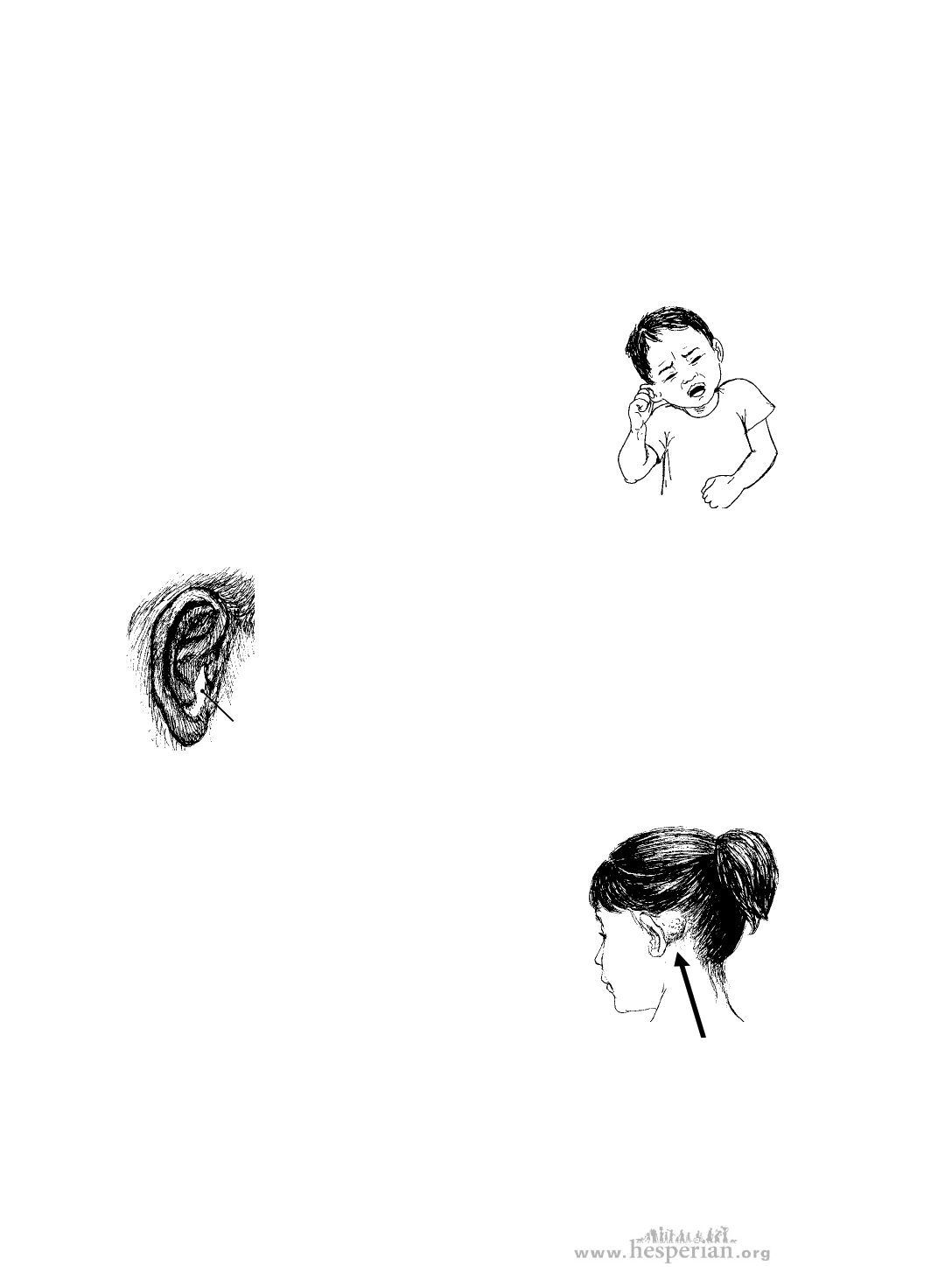
194 why children lose their hearing and what we can do
Glue ear
Sometimes after sudden ear infections, thick and sticky fluid collects
in the middle ear (this is called glue ear). Glue ear does not usually
hurt and drains away down the tube to the nose after a few weeks, but
sometimes it lasts for years. Glue ear often affects both ears and it makes
the child partially deaf as long as it lasts. Most cases of glue ear will
heal without treatment. But if there is any pain, give an
antibiotic by mouth as for acute infection (see pages
195 to 196).
Signs of ear infection:
• Pain — a young child may cry, rub the side of his
head, or pull on his ear
• Fever between 37.7° and 40°C (100° and 104°F)
• Runny nose, sore throat, cough
• Fluid may drain from the ear. It may be yellow, white,
watery or sticky. The fluid may have some blood in
it. A heavy flow of sticky, clear fluid is probably from
a hole in the ear drum. This fluid may stop with
medicines, but it can happen every time the child has
a cold, or puts his ears under water or swims.
fluid
A slight fluid discharge that smells and may be yellow
or green is probably from damage to the ear drum. An
operation may be needed to repair the ear drum.
• Hearing loss — temporary or permanent — in
one or both ears
• Sometimes nausea and vomiting
• Sometimes infection spreads to the bone
behind the ear (mastoiditis). This is very
painful and antibiotics must be given.
Go to a hospital!
Different signs may be present at different times —
for example, the pain may stop when fluid starts
flowing out of the ear.
mastoiditis
Check the ear in 3 to 4 months after any ear infection, even if there is no
pain and check the child’s hearing (see pages 50 to 58).
Helping Children Who Are Deaf (2004)